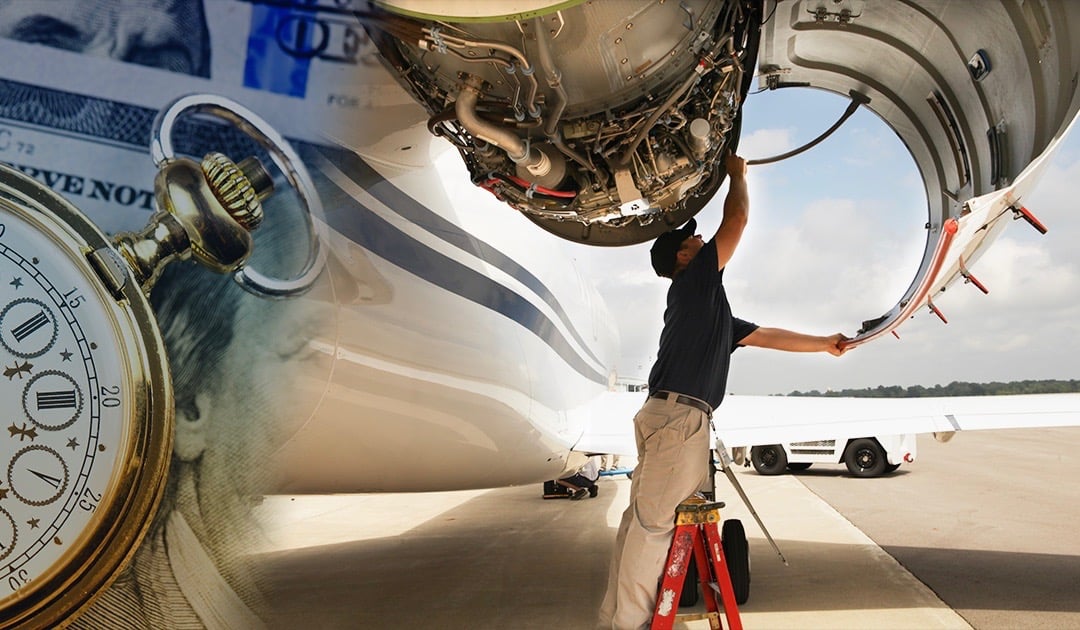2 min read
Taking a Value-Driven Approach to Aircraft Maintenance Management
Veryon : Oct 25, 2018 5:04:00 AM
What is your time worth?
It’s a common question that is often quantified by compensation and based on expertise, experience, potential, and the value you bring to a company. In addition, how you use your time is part of delivering value and assessing performance.
Understanding The Value of a Technician In Aviation Maintenance
In the world of aviation maintenance, considerable time is spent ensuring the safe operation of a myriad of different aircraft while maintaining asset value and, in many cases, managing employees. In summation, you’re responsible for establishing the workflow, the processes that ensure task completion, regulatory compliance and ultimately, a safe flight. Unfortunately, much of this time is spent spinning your wheels and going nowhere fast.
In aviation maintenance, you are typically judged on the foundation of technical skills valued in your profession and then specific technical skills based on the airframe(s). Since you were likely hired for your technical skill and prowess, having the ability to manage a department and lead people increases your value to the company. But how exactly is your value measured? What are the criteria used to determine your success?

The Main Cause of Inefficiency In Aviation Maintenance
Your time is money and highly valuable. Unfortunately, maintenance directors and managers typically spend more time managing inefficient processes that include entering, copying, pasting and exporting data from one place to another. While you are doing this, someone else is likely duplicating the effort in a different set of programs—and never the two shall meet.
All this time wasted on inefficient processes could be better utilized in ways that add value to your operation, the company—and your time. As Clay Shirky, noted writer and journalist on the social and economic effects of the Internet, said:
“It is the people who figure out how to work simply in the present, rather than the people who mastered the complexities of the past, who get to say what happens in the future.”
Many technicians have likely become masters at mitigating inefficiencies by implementing a series of band-aids to improve deficiencies. You have figured out ways to manipulate the system and compensate for the lack of intuitive processes by adding word processing, spreadsheets, shared drives, etc., along with checklists and templates to your day-to-day. These band-aids get the work done but don’t necessarily add value overall. Driving key changes towards more efficient and modern practices may seem like a lot to take on when time is limited, but technology has made it so that it doesn’t have to be.
Assess The Level Of Risk In Aviation Maintenance
Before adopting technology or understanding how you can improve efficiency, it’s important to assess the level of risk in your current process. Considering and answering the following:
- What happens when you aren’t there?
- What happens when a strong gust of wind shifts this house of cards you have built with your operations?
- What happens when you find a new position or retire?
- What does this band-aid workflow cost you and your team in terms of time?
- What would an ideal operation look like?
- What if you were able to mirror the technologies that propel your aircraft into your operations?
Combating Inefficiencies With Aviation Management Software
Once you understand the risk factors, cost, and time implications of your current process; get out there and explore the possibilities. Today, there is a myriad of solutions designed to automate your workflows, increase communication across your flight department, and give you more visibility into the key functional areas that impact aircraft uptime, resale value, and overall operational costs.
Qualities Of A Modern Solution
When researching and comparing solutions, make sure to ask the following:
- How much time will you save daily?
- What about savings realized in operational costs?
- How will inter-departmental communication improve?
- Will it impact technician productivity? If so, by how much?
- What about data entry and security? Consider the features that enable you to store good quality data in a secure environment.
Driving change that improves overall productivity and reduces operational costs is what leaders do. Additionally, you will gain efficiencies and time back into your day to focus on the tasks that deliver the most value to your operation.
For more in-depth best practices watch the Aviation Management Best Practices Webinar Series here.



